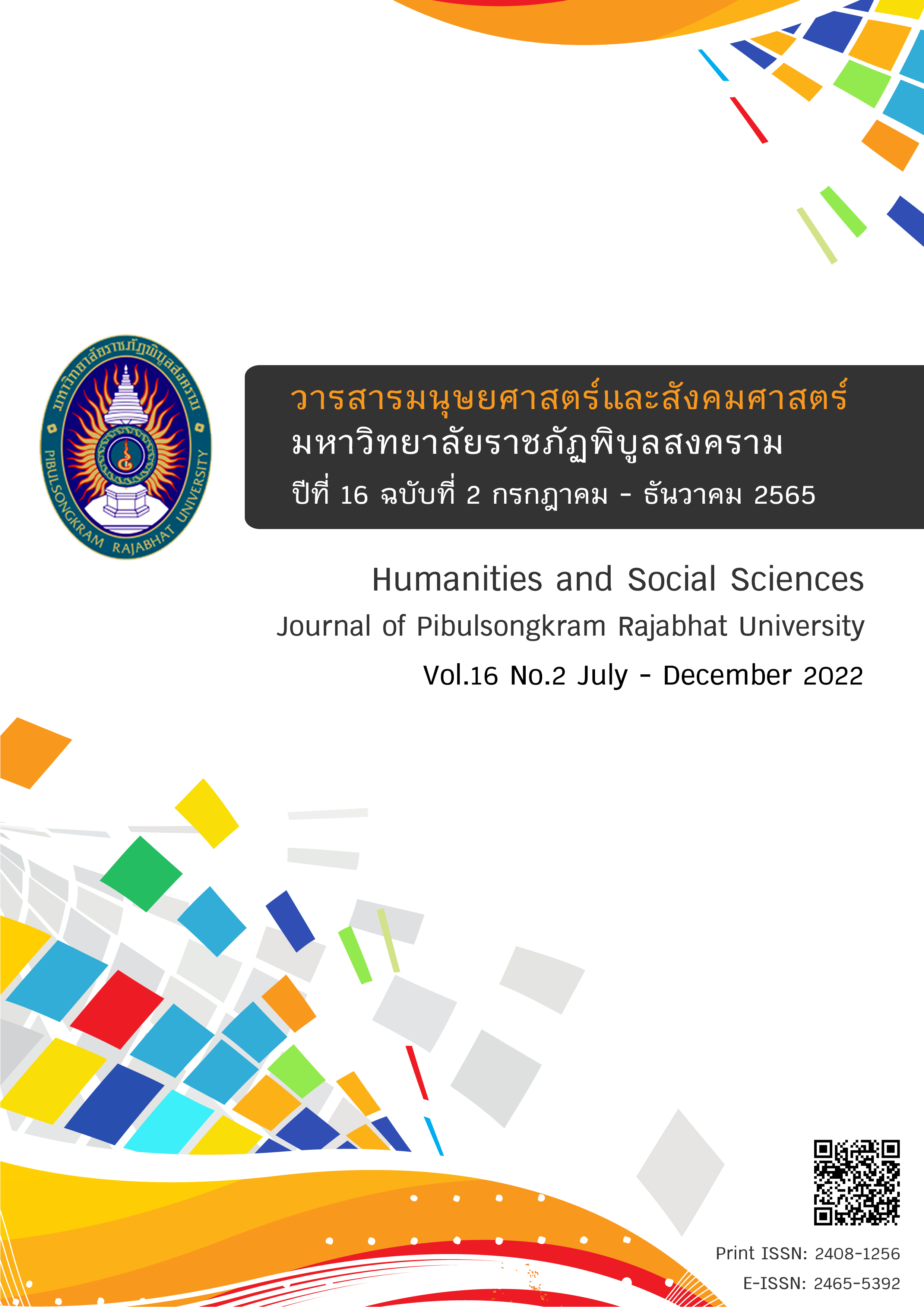Selective Attention Enhancement Program based on Broadbent’s Theory for Elder Adults: Electroencephalography Study (EEG)
DOI:
https://doi.org/10.14456/psruhss.2022.58Keywords:
Selective attention, Electroencephalogram, Broadbent theoryAbstract
This experimental research (pretest and posttest control group design) aimed to develop the selective attention enhancement program based on Broadbent’s Theory for elder adults and to study the effect of the developed program in terms of behavior and electroencephalography studies. The participants were 60 elder adults from the senior citizen club of Saohai Hospital, Saraburi province who were selected based on the inclusion criteria and randomly assigned to 2 group including the selective attention enhancement program based on Broadbent’s Theory group and control group who received no intervention. The research instruments were Flanker task program from the Psychology Experiment Building Language (PEBL) and 14-channel Emotiv EPOC headset. The descriptive statistics and t-test were used to analyze the data. The result revealed that the experimental group had a higher score of mean accuracy and a lower response time on the selective attention task when compared to before-experiment conditions (p<.01). After training, the experimental group exhibited a higher score of mean accuracy and a lower response time on the selective attention task when compared to the control group (p<.001). In the electroencephalography studies, the experimental group showed a significant decrease in the average relative power of theta and alpha frequencies when compared to before-experiment conditions (p<.01 and p<.05). In addition, the experimental group exhibited a significant decrease in the average relative power of theta and alpha frequencies when compared to the control group (p<.001). It can be concluded that the developed program can enhance the selective attention of elder adults. This will be an alternative way to develop the cognitive processes leading to improve the quality of life of the elderly.
References
Broadbent, D. E. (1958). Perception and communication. Oxford: Oxford University Press.
Cohen, J. (1988). Statistical Power Analysis for the Behavioral Sciences (2nd ed.). New Jersey: Lawrence Erlbaum Associates.
Edmonds, W. A., & Kennedy, T. D. (2017). An applied reference guide to research designs: Quantitative, qualitative, and mixed methods. Thousand Oaks, California: Sage.
Fulcher, E. (2009). Cognitive Psychology. Retrieved March 6, 2014 form http://www.eamonfulcher.com/CogPsych/frontPage.htm.
GBD 2016 Dementia Collaborators (2019) Global, regional, and national burden of Alzheimer’s disease and other dementias, 1990-2016: A systematic analysis for the Global Burden of Disease Study 2016. Lancet Neurol, 18, 88–106.
Izquierdo, I., Cammarota, M., Silva, W. C. D., Bevilaqua, L. R., Rossato, J. I., Bonini, J. S., & Medina, J. H. (2008). The evidence for hippocampal long-term potentiation as a basis of memory for simple tasks. Anais da Academia Brasileira de Ciencias, 80(1), 115 - 127.
Joyce, B., Weil, M., & Calhoun, E. (2009). Models of Teaching. (8th ed.). USA: Pearson.
McLeod, S (2008). Simply psychology; Information Processing . Retrieved March 6,2014. http://www.simplypsychology.org/psychosexual.html .
Mochizuki, A. A., & Kirino, E. (2008). Effects of coordination exercises on brain activation: A functional MRI study. International Journal of Sport and Health Science, 6(3), 98-104.
Pan, C. W., Wang, X., Ma, Q., Sun, H. P., Xu, Y., & Wang, P. (2015). Cognitive dysfunction and health-related quality of life among older Chinese. Scientific Reports, 5(1), 1-8.
Scalf, R. E., Wenger, D. E., Frick, M. A., Mandrekar, J. N., & Adkins, M. C. (2007). MRI findings of 26 patients with Parsonage-Turner syndrome. American Journal of Roentgenology, 189(1), W39-W44.
Waltz, C. F., Strickland, O. L., & Lenz, E. R. (Eds.). (2010). Measurement in nursing and health research. New York: Springer publishing company.
Wennberg, A., Kueider, A., Spira, A., Adams, G., Rager, R., & Rebok, G. (2014). Online attention training for older adults. The international journal of cognitive technology: the official journal of the Practical Memory Institute, 19(2), 13-21.
Yuvaraj, R., Murugappan, M., Ibrahim, N. M., Omar, M. I., Sundaraj, K., Mohamad, K., & Satiyan, M. (2014). On the analysis of EEG power, frequency and asymmetry in Parkinson’s disease during emotion processing. Behavioral and Brain Functions, 10(1), 19-47.
Downloads
Published
How to Cite
Issue
Section
License
Copyright (c) 2021 Humanities and Social Sciences Journal of Pibulsongkram Rajabhat University

This work is licensed under a Creative Commons Attribution-NonCommercial-NoDerivatives 4.0 International License.
Any articles or comments appearing in the Journal of Humanities and Social Sciences, Rajabhat Phibulsongkram University, are the intellectual property of the authors, and do not necessarily reflect the views of the editorial board. Published articles are copyrighted by the Journal of Humanities and Social Sciences, Rajabhat Phibulsongkram University.









